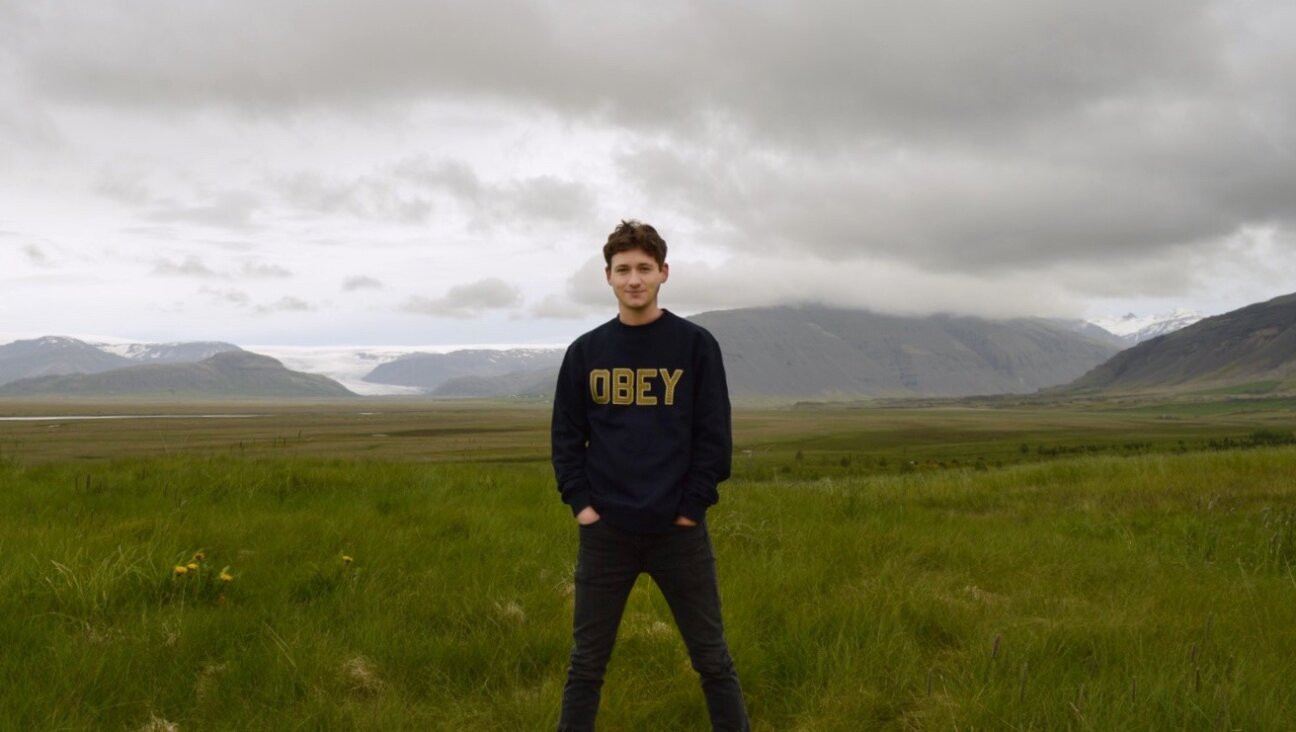Krav Maga Method
It’s a pleasure to write about Jonathan Rosen’s fine new “Joy Comes in the Morning,” because it was Rosen, then editor of the Arts & Letters section of the Forward, who hired me to write this column 14 years ago. Unfortunately, not being a book reviewer, I’m forced to limit myself to two words in his book.
These words are “krav maga” (pronounced “krahv mah-GAH”), an Israeli method of hand-to-hand combat that is being studied by a protagonist of the novel, Lev Friedman, in order to survive better in the streets of New York. Although not as well known as judo, karate, kung fu, t’ai chi ch’uan, aikido or capuara, krav maga, popularized by movie star/recording artist Jennifer Lopez’s use of it in the 2002 film “Enough,” has a growing following in the world today, among insecure urbanites as well as law enforcement officers, military commandos and anti-terrorist units. This is because, despite its use of techniques borrowed from other martial arts, it is a no-holds-barred, fight-to-win method that has nothing sportive about it. Its only goal is to disable or maim your opponent before he does the same to you.
Krav maga, which means “contact combat” in Hebrew, gives the English language a new Israeli term to add to the smattering of such borrowings that already exist, such as “kibbutz,” “pita” and “Uzi.” Yet its popularity may be about to enrich English a lot more, since krav maga has spawned half-a-dozen almost identical but rival systems that all go by Hebrew names of their own. Before you decide to study disabling or maiming anyone, you might want to know the things to which these refer.
The oldest of them is “kapap,” which comes from a Hebrew acronym for the phrase krav panim el-panim, “face-to-face combat.” It was from kapap, indeed, that krav maga developed, since it was the original term used in Israel — or more precisely, in Palestine — for the method of self-defense taught in the Palmach and the Haganah, the two main semi-clandestine military wings of the Jewish Yishuv under the British Mandate. Although simple methods of kapap, similar to those practiced by armies elsewhere, already were being taught in the 1930s, a unique form of it developed in the 1940s when a Jew from Czechoslovakia named Imrich Lichtenfeld, a former boxing and wrestling champion, ju-jitsu expert and anti-Nazi street fighter with his own self-taught ways of putting unwanted assailants out of action, began to teach these to elite soldiers in what was soon to be the Israeli army.
Lichtenfeld called this technique krav maga and went on to instruct Israeli civilians and a generation of disciples in it upon retiring from the army in 1964. In the Israeli army, however, kapap has continued to be a widely used term, and today, although there are simpler and more intricate versions of the same approach, the krav maga taught in Israeli commando units is still called kapap, or sometimes loh.ama ze’ira (“small-scale fighting”) or lotar (an acronym for loh.amat anti-teror, “anti-terror fighting”), while the krav maga taught to ordinary soldiers is krav maga.
Meanwhile, however, various instructors of krav maga, seeking to promote their own schools of it, have adopted other names to differentiate themselves from their rivals. The first to do so was a student of Lichtenfeld’s by the name of Eli Avikzar, who broke with the master and began to teach what he called krav magen, “defensive combat.” Dennis Hanover, a karate master who is South African immigrant to Israel, created a system that he called hisardut, “survival.” Two ex-Israeli special forces members, Moti Horenstein and Miki Erez, incorporated Thai kickboxing into their krav maga and named it krav maga maley, “complete krav maga.” Horenstein then changed this to “survival hisardut,” and subsequently to kavanah, “concentration.”
Today, these different varieties of krav maga all have set up their own branches and organizations, functioning in dozens of countries and awarding their students different-colored belts, as do other martial arts. There is an International Krav Maga Federation, a World Survival Hisardut, an International Krav Maga Association, a Lotar International, an International Kavanah Federation, and various courses in “basic kapap” and “advanced kapap,” as well as offshoots of krav maga with non-Hebrew names, such as an American variety called “Reality-based Personal Protection.”
All these techniques are highly similar and emphasize such rough-and-tumble moves as paralyzing opponents with kicks and blows to the genitals and other sensitive areas; strangling them with chokeholds; and breaking their bones and joints, as well as preventing them from returning the compliment. You do not bow to your krav maga opponent at the beginning as you do in a judo match, and you do not help him up off the floor at the end. In fact, if he shows any signs of getting up from it, you stomp on him one more time.
Lev Friedman is a gentle soul, and it is hard to imagine him studying krav maga, although as a bird watcher who likes to frequent the hidden nooks of Central Park he understandably needs to take precautions. In “Joy Comes in the Morning,” in any case, he never maims or disables anyone, a tribute to the fact that New York is safer than it used to be.
Questions for Philologos can be sent to [email protected].

I hope you appreciated this article. Before you go, I’d like to ask you to please support the Forward’s award-winning journalism this Passover.
In this age of misinformation, our work is needed like never before. We report on the news that matters most to American Jews, driven by truth, not ideology.
At a time when newsrooms are closing or cutting back, the Forward has removed its paywall. That means for the first time in our 126-year history, Forward journalism is free to everyone, everywhere. With an ongoing war, rising antisemitism, and a flood of disinformation that may affect the upcoming election, we believe that free and open access to Jewish journalism is imperative.
Readers like you make it all possible. Right now, we’re in the middle of our Passover Pledge Drive and we need 500 people to step up and make a gift to sustain our trustworthy, independent journalism.
Make a gift of any size and become a Forward member today. You’ll support our mission to tell the American Jewish story fully and fairly.
— Rachel Fishman Feddersen, Publisher and CEO
Join our mission to tell the Jewish story fully and fairly.
Our Goal: 500 gifts during our Passover Pledge Drive!






















